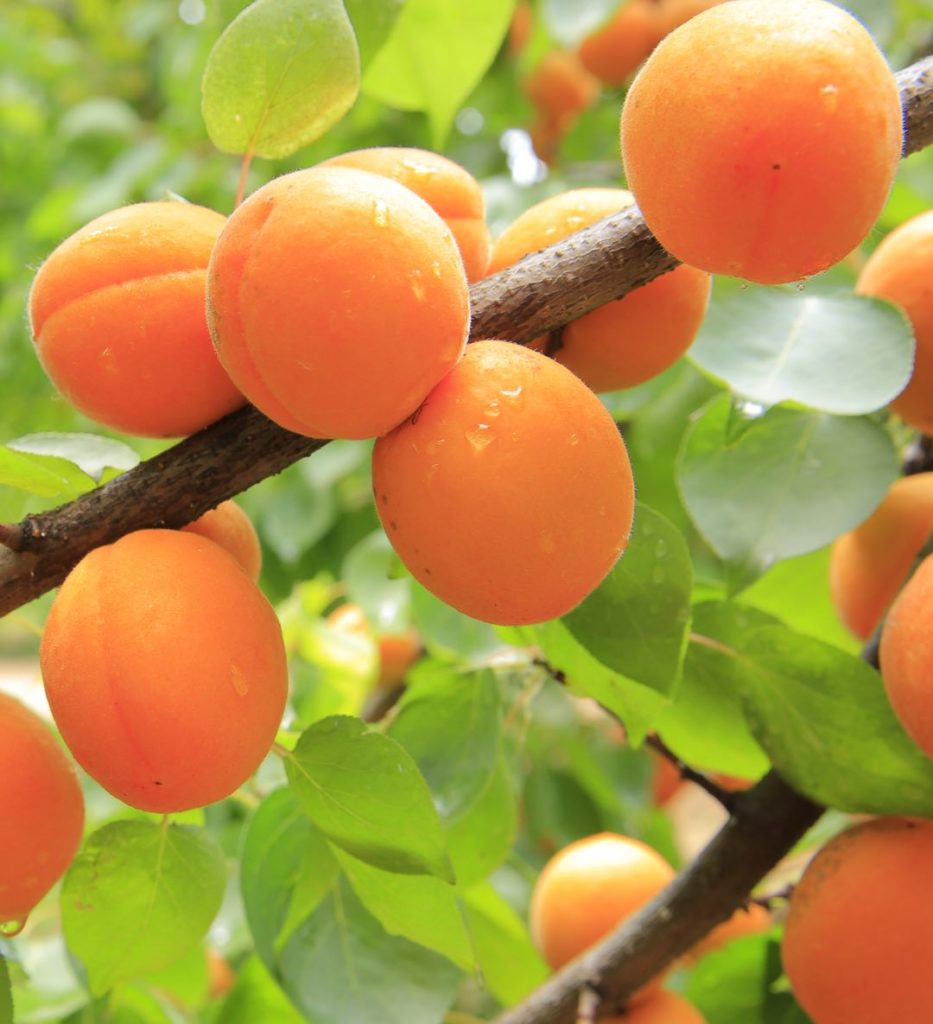
Armenia
Apricot
Prunus armeniaca

General Description/Cultural Significance
The ancient country of Armenia takes its name from the apricot, Prunus armeniaca. It is one of the most flavorful and juiciest species in the world. At harvest time, Armenian homes are filled with the smell of the ripening fruit filling bowls and, at other times, there is always the country’s famous apricot brandy and vodka, apricot deserts, apricot marmalade and dried apricots. They are nutritious, anti-inflammatory, and antiseptic. They can be used to treat asthma, coughs, bronchitis, and constipation.
Climate Change/Conservation Status
Recent studies on how climate change will affect crop growth in Armenia have found that apricot harvests will become increasingly less bountiful as global warming progresses. But now you will find an apricot in the hands of the hikers following the trails and enjoying the amazing diversity of flora as they move through mountains, gorges and alongside streams and rivers that connect ancient monasteries and churches.
Climate change has brought inconsistency to annual precipitation. Heavy rains have increased by 32% bringing about frequent land and mud slides and destroying homes, highways and infrastructure. Increasing temperatures and reduced precipitation is also having a damaging effect on crop yields. Agriculture uses sixty-two percent of the country’s land and eighty percent of the crops now require irrigation due to desertification.
Despite the challenges of climate change, Armenia’s ecosystems continue to support rich biodiversity with most of the species being endemic or rare. This is due to the variation in elevations which not only provides diverse habitats, but enables plants to shift upwards towards cooler zones. However, desertification is projected to severely accelerate, expanding the semi-desert and desert areas by thirty percent.
Water scarcity is an increasing problem not only because of decreased precipitation, but because of the reduction in glacial volume which has declined by fifty percent since the 1900s. High temperatures are also evaporating the winter snow pack at increased rates, reducing the spring runoff that replenishes water resources. As a result, in 2015, the Ministry of Nature Protection found it necessary to seal many artesian wells and terminate water use permits. Armenia has reported a ten percent reduction in precipitation over the past eighty years and is seeking to upgrade its water reservoirs. Armenia has no fossil fuel resources and is developing an energy strategy program that includes replacement of its existing nuclear power plant.
Even with additional irrigation and adaptation techniques, river flows are in decline. It is projected that the damaging effects of temperature increases and drought will decrease yields and make the trees vulnerable to other health risks and pest infestations in the coming years.
Alternate Names
Apricot
Armeniaca
Armenian plum
Sources
Climate Links, 2017. Climate Risk Profile: Armenia. US Agency of International Development. [website]
Pasoyan, A., & Harutyunyan, D., 2015. Politics of Climate Change in Armenia: Commitments and Expectations from the International Climate Negotiations. Heinrich Böll Stiftung. [website]
Permanent Mission of the Republic of Armenia to the United Nations. This statement can be found on the World Sensorium original website.
Pollard, R.P., et. al., 2020. Prunus armeniaca. The IUCN Red List of Threatened Species. DOI: 10.2305/IUCN.UK.2020-3.RLTS.T50134200A50134213.en

